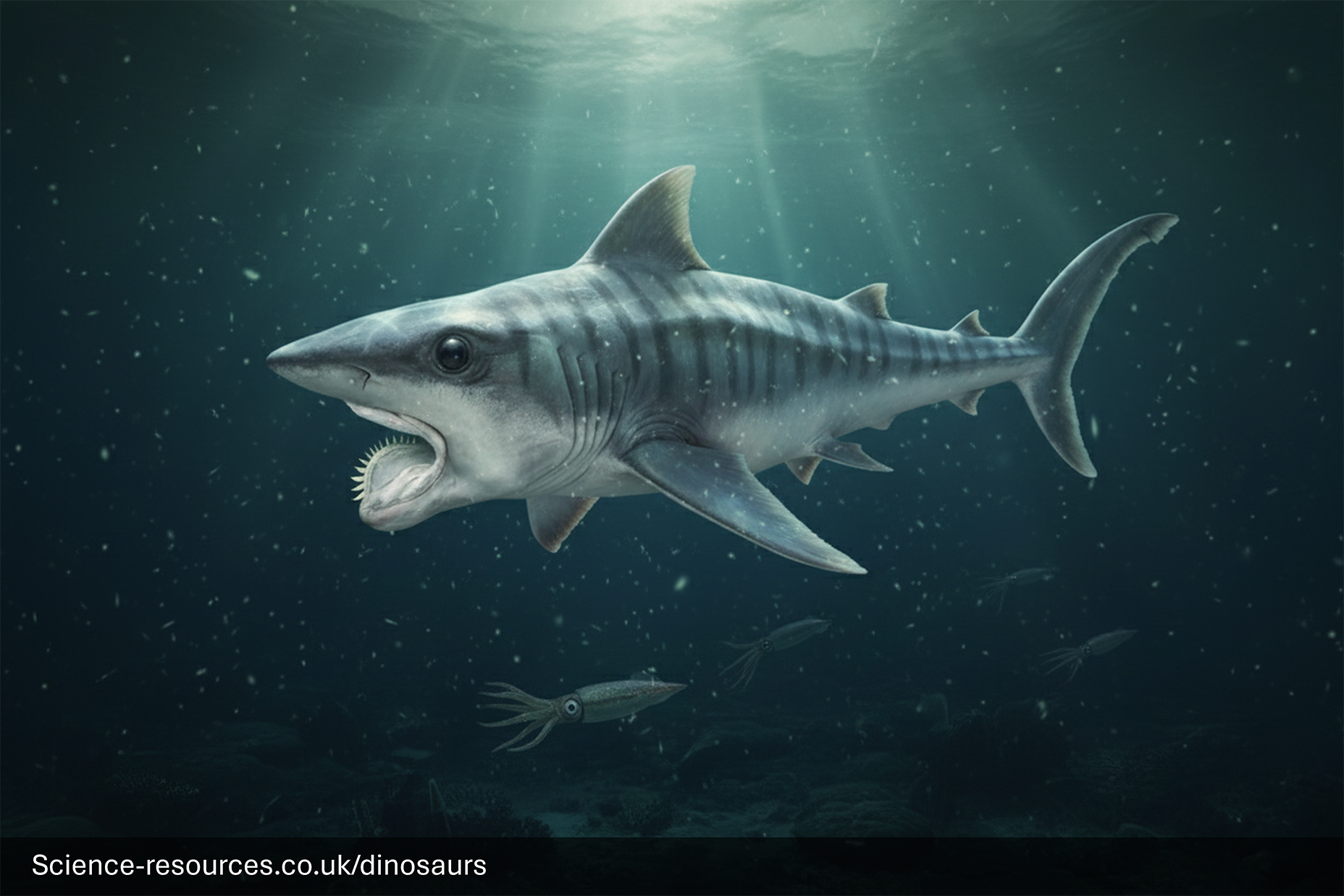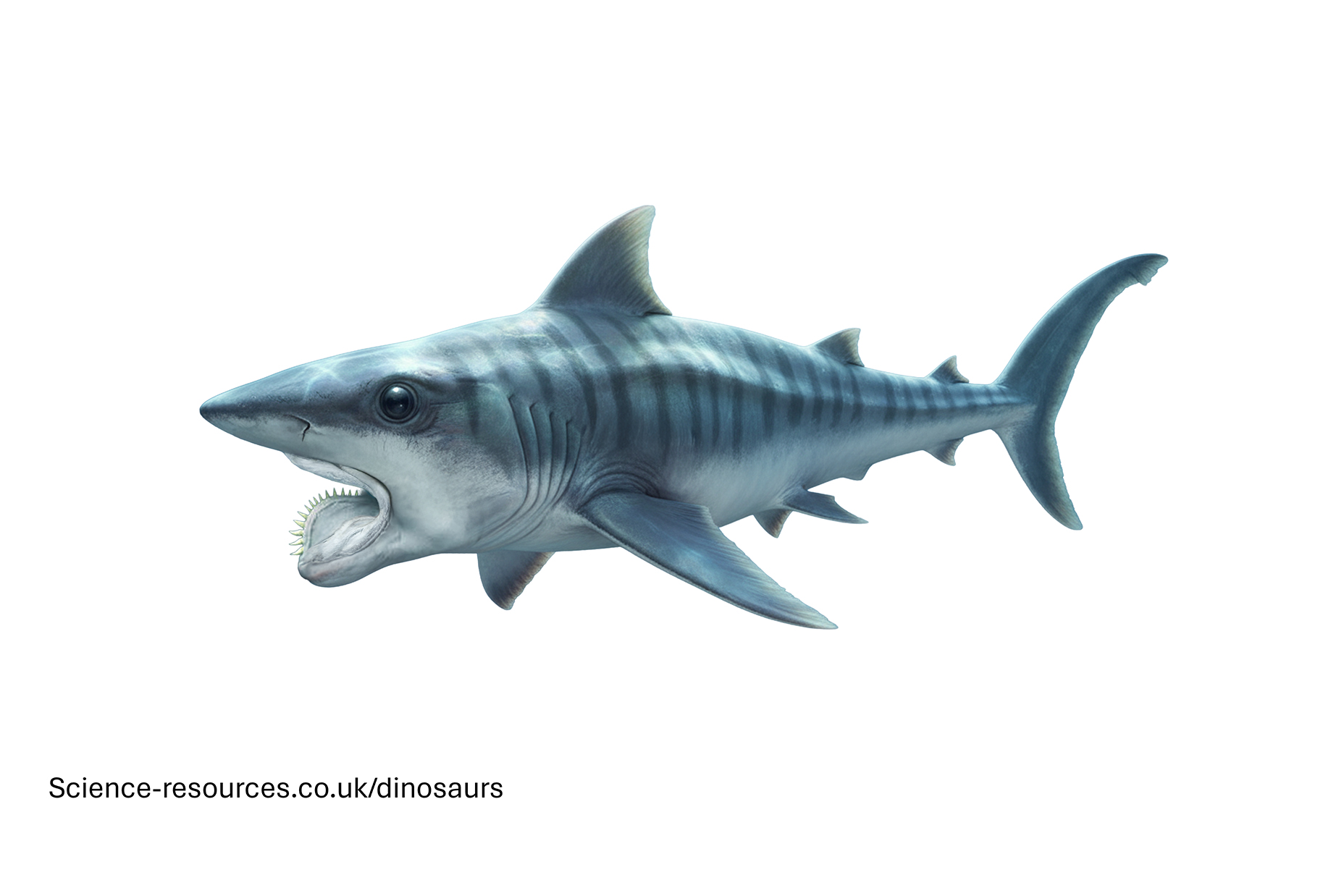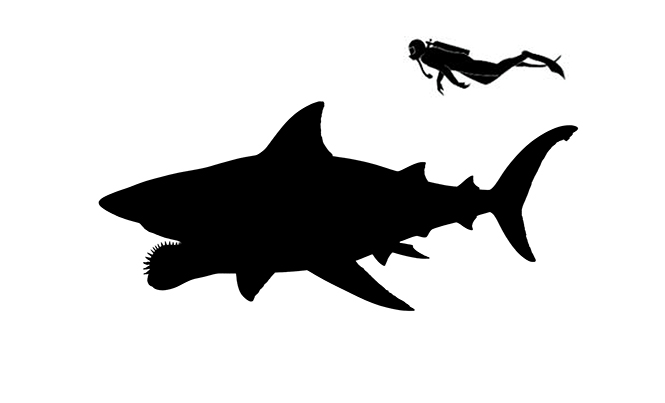Dinosaurs A:Z | H
You may also be intrested in: Free Dinosaur games
Dinosaurs and other prehistoric animals:
Helicoprion (The Buzzsaw Shark)
You may also be intrested in: Free Dinosaur games
Helicoprion was a strange and fascinating species of prehistoric shark-like fish that swam in the ancient seas over 250 million years ago. It is famous for its unique spiral jaw filled with teeth, making it one of the most unusual predators of its time. . Helicoprion lived from approximately 290 to 250 million years ago. Fossils of Helicoprion teeth have been discovered in Russia, the United States (Idaho, Utah, Nevada), Australia, and China. It lived in warm, shallow seas during the Permian period. Helicoprion could grow up to 4–8 metres (13–26 feet) long—about the length of a large family car. Scientists believe it weighed several hundred kilograms, but exact estimates are difficult due to its unusual skeleton. Helicoprion looked different from any shark alive today. It had a long, streamlined body, a cartilaginous skeleton, and a bizarre lower jaw shaped like a buzzsaw, packed with dozens of sharp teeth arranged in a tight spiral (called a “tooth whorl”). Generative AI Notification: Some elements of this image have been created or enhanced using AI technology. To find out how we create all our dinosaurs and other prehistoric animals, click here. Helicoprion was a carnivore, preying mostly on soft-bodied marine animals like squid, fish, and possibly ammonites. Its spiral of sharp teeth worked like a circular saw, slicing through its prey with ease. Helicoprion lived in marine environments. It inhabited Earth's oceans globally, with a widespread distribution evident from fossils found on every continent except Antarctica.
What is an Helicoprion?
When and Where Helicoprion Lived
How Big Was Helicoprion?
Appearance
 Helicoprion
HelicoprionWhat did Helicoprion eat?
Where Did Helicoprion Live?
Interesting Facts
Pronounced: heh-LEE-co-PRY-on Name Means: "Spiral Saw"


Helicoprion Facts
Length: Up to 8 metres (26 feet)
Diet: Carnivore (Fish, Squid, Marine reptiles)
Time: Permian period (about 290 to 250 million years ago)
Habitat: Open Seas
Fossils Found: Worldwide (especially Russia, USA, Australia, China)
Helicoprion belonged to the family Helicoprionidae, which is part of the extinct order Eugeneodontida, a group of ancient cartilaginous fish related to modern chimaeras, not true sharks.
Q1: What is Helicoprion?
Helicoprion is an extinct species of ancient fish with a spiral jaw, which lived long before the dinosaurs.
Q2: What did Helicoprion look like?
A2: Helicoprion had a long body and a unique spiral of teeth in its lower jaw, like a circular saw.
Q3: How big was Helicoprion?
A3: It could reach up to 8 metres (26 feet) in length.
Q4: What did Helicoprion eat?
A4: Helicoprion ate squid, fish, and other soft-bodied sea creatures.
Q5: Where did Helicoprion live?
A5: It lived in warm, shallow seas around what is now Russia, the USA, Australia, and China.
Q6: When did Helicoprion go extinct?
A6: Helicoprion went extinct around 250 million years ago, possibly due to the Permian mass extinction.
Q7: How strong was Helicoprion’s bite?
A7: Scientists think its spiral jaw could slice through tough shells and flesh, making it a top predator in its environment.
Q8: How is Helicoprion related to modern animals?
A8: Helicoprion is related to modern chimaeras (ghost sharks), but it is not a direct ancestor of today’s sharks.
Q9: Who discovered Helicoprion?
A9: The first fossil spiral teeth were found in the late 19th century in Russia, and the species was first described by scientists in 1899.
Q10: Are there any complete skeletons of Helicoprion?
A10: No, only the tooth whorls and some jaw cartilage have been found, because the rest of the skeleton was made of cartilage, which does not fossilise well.
Which family did Helicoprion belong to?
Helicoprion FAQ
You may also be intrested in:
Tags: How big was Helicoprion, Helicoprion size, where does Helicoprion live, how long was Helicoprion, what does Helicoprion mean, Helicoprion, Helicoprion facts